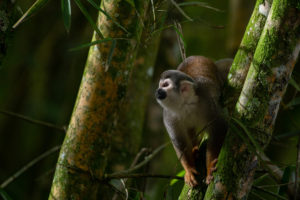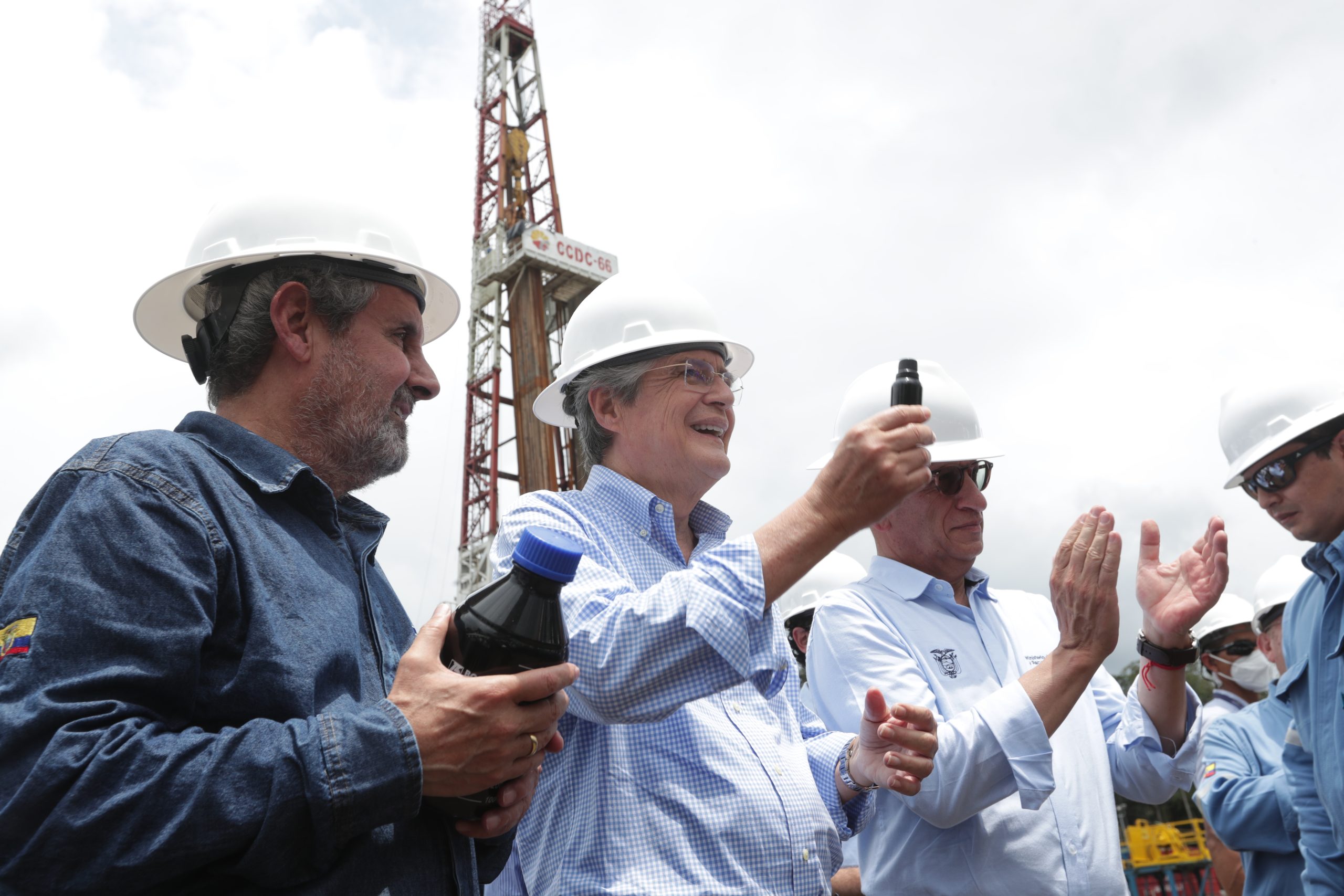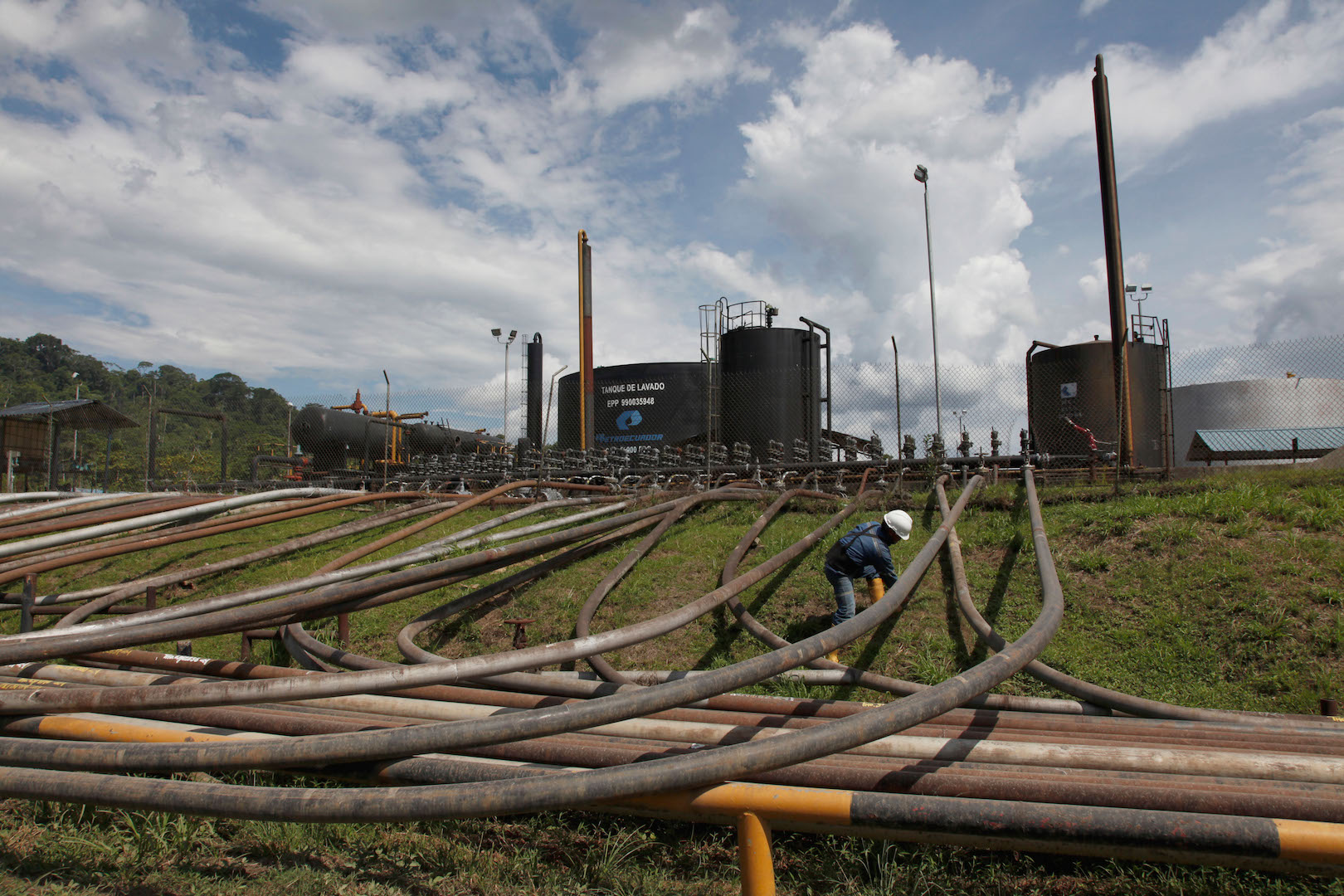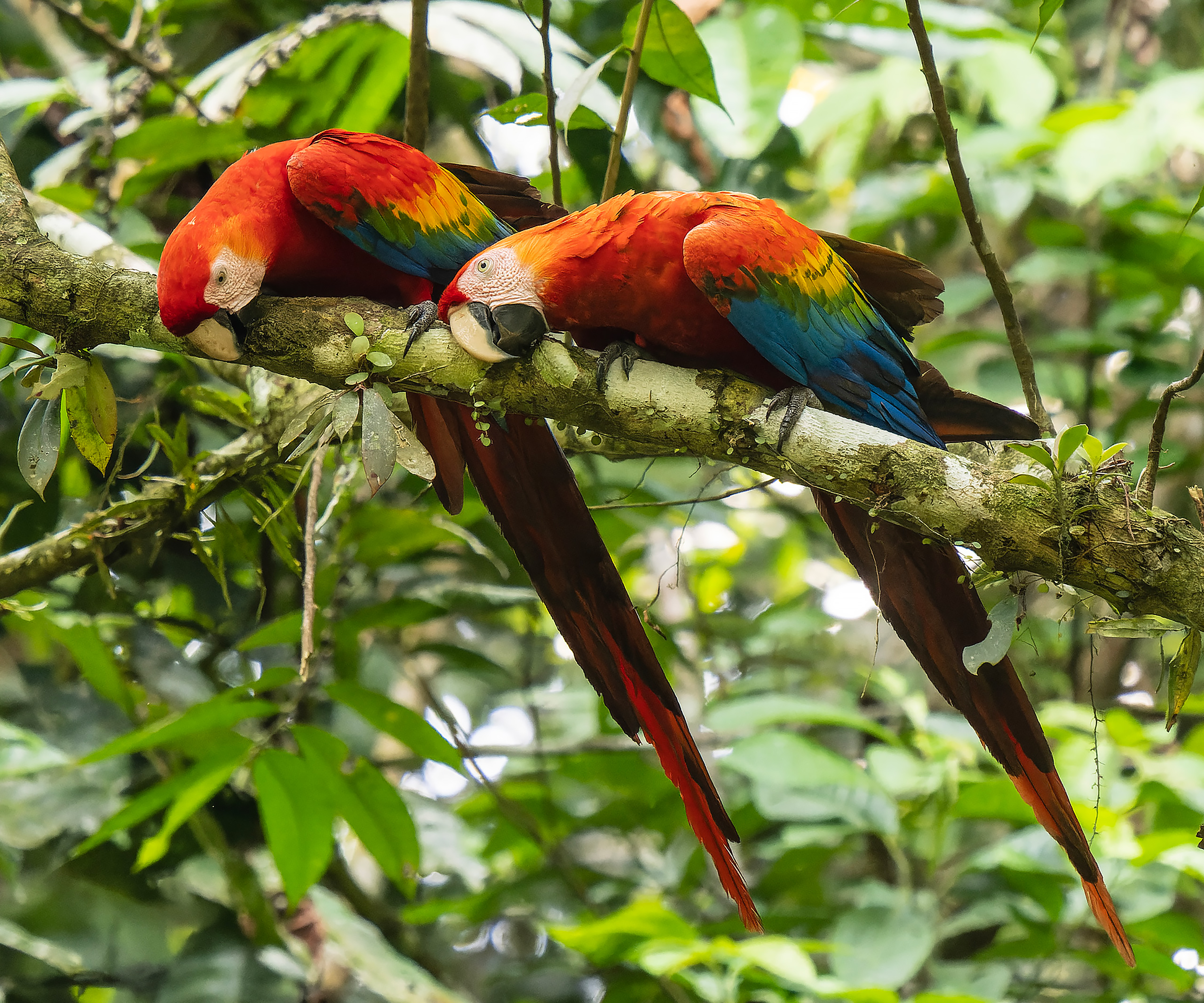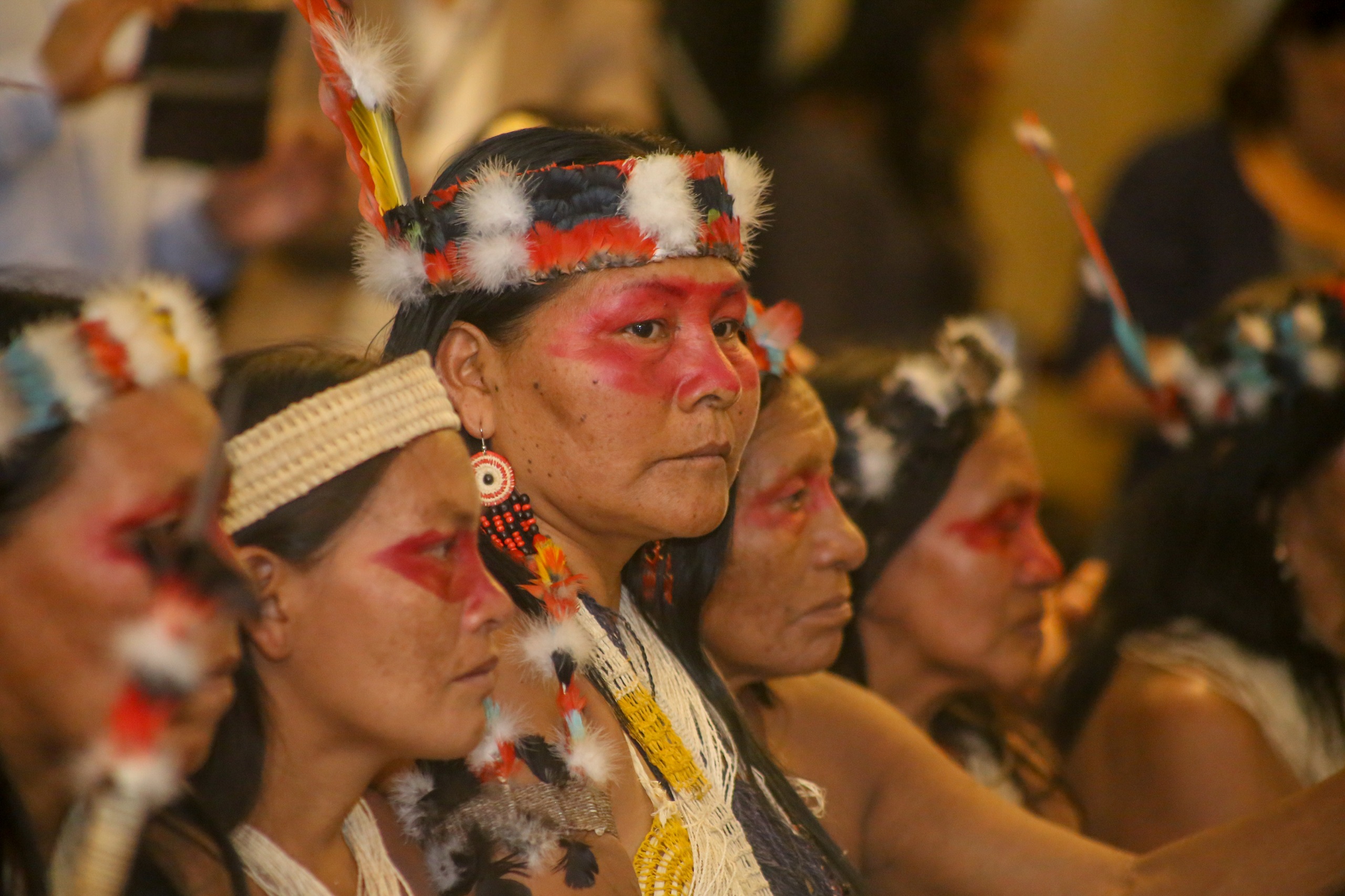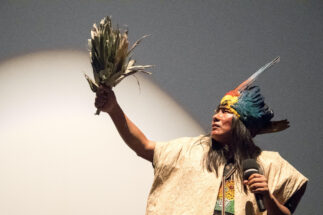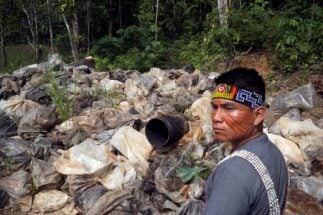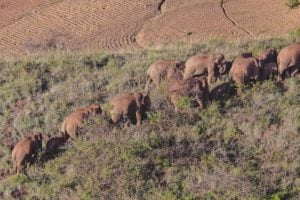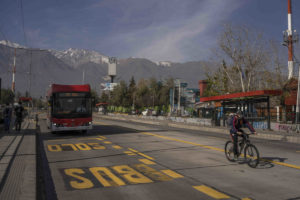In 2007, Ecuador’s then-president, Rafael Correa, called on the world to protect Yasuní, the Amazonian national park that is thought to be one of the most biodiverse places on the planet – and which also sits on the country’s largest oil reserves.
Launching the Yasuní-ITT Initiative, Correa asked for international cooperation to secure a US$3.6 billion fund that would help to keep this oil in the ground. If the goal was not reached, he said, exploitation would inevitably have to begin.
The initial funding target was calculated at half the revenue Ecuador expected to realise from exploiting the Yasuní reserves. Some 846 million barrels of oil would no longer be extracted, and 407 million tonnes of carbon dioxide emissions would reportedly be avoided. The country would instead be compensated by the international community for the conservation of this corner of the Amazon, targeting US$350 million annually for 10 years, and preventing the environmental costs brought by oil production.
In 2013, after collecting just US$13 million in six years, Correa told press that “the world has failed us”, and announced the scrapping of the initiative. With this, he also declared that studies would begin to explore the exploitation of Yasuní’s reserves at the Ishpingo, Tambococha and Tiputini (ITT) oil fields, also known as Block 43.
Ten years have passed, and seven since drilling began, but the debate over Yasuní’s resources is still raging.
After over a decade of intense campaigning led by Yasunidos, a civil society collective focused on the protection of Yasuní, Ecuador’s Constitutional Court issued a ruling in May that paved the way for a nationwide referendum to decide whether oil exploitation at ITT-Block 43 should continue or be banned.
The vote will take place on 20 August, coinciding with the country’s general elections, which were initially due to be held in 2025 but were brought forward after President Guillermo Lasso dissolved the National Assembly in May.
The debate has long been a complicated one, but the central questions now are what will happen – to Ecuador and its economy, to Yasuní and its people – if the country votes to end oil activities in the block.
The No vote: ‘Unviable’
According to official data, reserves of more than 1.6 billion barrels of oil are located within ITT-Block 43, making it the largest hydrocarbon project in Ecuador’s history.
The block is managed by state-owned Petroecuador, but since 2016, four contracts have been signed with Chinese companies Sinopec and Chuanqing Drilling Engineering Company Limited to provide “specific integrated services” for drilling and completion of oil wells, making them responsible for operations.
Petroecuador has reportedly said that a “Yes” vote to ban exploitation of ITT-Block 43 would lead to US$13.8 billion in lost income for the country over the next two decades.
President Lasso, meanwhile, has said that an end to oil production at the fields will leave the next government with only two options: “Reduce spending in sensitive and important social areas or reduce some subsidies”. According to the Ministry of Economy and Finance, a quarter of the state budget goes towards subsidies, within which pensions and welfare support are included.
“We will have to think about how to replace this income, because it is necessary for the fight against child malnutrition, and the health, education and security budgets,” Lasso added.
In 2023, these subsidies amounted to just under US$4.8 billion, 23.7% of the budget. They include financial support for vulnerable groups, social security, domestic gas usage, and funds for urban and agricultural development. But around a third of subsidies go towards fuel, which the government says helps “recover costs for the sector”, as well as helping to combat inequality.
According to the International Monetary Fund, Ecuador is among the top 15 countries with the highest fuel subsidies, with the Ecuadorian state paying US$1 towards every kilogram of liquefied petroleum gas (LPG), an important source of domestic energy. While the average price in Latin America for a 15 kg cylinder of gas is reported to be US$13, in Ecuador this costs US$1.6.
You can’t live off air, birds and reptiles. It is a very serious blow to the Ecuadorian economy if the ‘Yes’ vote winsFernando Santos Alvite, Ecuador’s mining and energy minister
In an interview with Diálogo Chino, Ecuador’s current energy minister, Fernando Santos Alvite, was even more direct in his criticism of the “Yes” option, describing it as “suicide” to ban oil exploitation in Yasuní.
“You can’t live off air, birds and reptiles. It is a very serious blow to the Ecuadorian economy if the ‘Yes’ vote wins,” Santos said.
“It is not a simple plebiscite. We are playing with the future of the country. Do we want a future driven by the wealth that nature, mining and oil have given us, or do we close off that future and enter a really uncertain period?”
Santos described an end to operations in the ITT fields as “unviable”, adding that it would be even more unworkable for infrastructure to be removed from the block within the next year, as the Constitutional Court has indicated will be required should the “Yes” vote succeed.
Oil extraction in the area began in September 2016, after several years of work to build access routes and install machinery. State-owned Petroecuador has reportedly invested US$1.9 billion in equipment and facilities.
Shutting down operations in ITT-Block 43 would take at least five years and cost nearly US$500 million, Petroecuador manager Ramón Correa told Diálogo Chino, adding that 230 production wells would have to be sealed with cement, 12 platforms dismantled and the Tiputini processing centre – the “heart of the operation” – would have to be demolished. This facility is where oil is separated before being transported from the Amazon to the coastal province of Esmeraldas, from which it is exported.
The Yes vote: Beyond oil
The Yasuní National Park is the largest protected area in Ecuador, extending over more than 1 million hectares between the provinces of Orellana and Pastaza, in the country’s north-eastern Amazon. It is home to 1,300 tree species, over 600 bird species and at least 268 fish species, and is listed as a Biosphere Reserve by UNESCO. It is also home to the Tagaeri and Taromenane, the last Indigenous groups to live in isolation in Ecuador.
“In one hectare of Yasuní there is more biodiversity than in the whole of North America,” claims Pedro Bermeo, spokesperson for Yasunidos. “In addition, there are peoples living in voluntary isolation – to exploit it would be ethnocide.”
In a recent report, “China in the Yasuní-ITT”, released by the NGO Latinoamérica Sustentable in July, authors called on the Chinese government to encourage Chinese companies to “withdraw in an orderly manner” from ITT-Block 43, pointing to oil activities as contrary to the country’s international climate commitments. They also called on the government to monitor and dissuade companies from engaging in socially or environmentally sensitive areas, such as those with Indigenous peoples in voluntary isolation.
For Bermeo, a “No” vote in the referendum is impossible to countenance: “It is not in our plans or in anyone’s head, only in the heads of those who want to govern and profit from Yasuní. We know that the ‘Yes’ will win. And Ecuador must necessarily map out a post-oil future.”
Leaders from the country’s Amazonian provinces have also joined the “Yes” campaign. Juan Bay, president of the Waorani Nation, told Diálogo Chino: “My people have seen zero benefits [from oil projects] – no social, economic or political development. We will vote and we are campaigning for a ‘Yes’.”
The position of the Indigenous communities has also been swayed by the almost 900 oil spills that occurred in the Ecuadorian Amazon between 2015 and 2021, some of them affecting Yasuní.
“The vote is not limited to the issue of oil, but puts at stake the space in which Indigenous peoples live,” Zenaida Yasacama, vice-president of the Confederation of Indigenous Nationalities of Ecuador (CONAIE), told Diálogo Chino.
“We are prepared to give our lives for Yasuní. The era of exploitation, which has affected the environment so much and impoverished our communities, is over.”
The alternatives
According to official figures, the seven years of exploitation have yielded a positive balance. An output of more than 57,000 barrels per day has been reached, representing 11% of national production. In 2022, the government earned US$1.2 billion from the sale of this oil. However, according to Yasunidos’ calculations, the net income from this block is US$148 million a year – a figure that can be compensated, they claim.
The possibility of the country’s oil running out has been under discussion in Ecuador for decades. “That moment is today, it has finally arrived,” Luis Arauz-Jaramillo, a researcher at the Central University of Ecuador in Quito, told Diálogo Chino. “At the current rate of extraction, proven reserves will run out by 2028. Moreover, in the global context, according to World Bank data, investment in the oil sector has been reduced by 20% in just four years.”
For Arauz-Jaramillo, the transition to a post-oil Ecuador should be gradual and start now.
“The first step should be to avoid oil exploitation in the country’s megadiverse areas. Why? Because their economic value will grow year by year, in a world where it is becoming increasingly difficult to find territories with these characteristics,” the researcher said.
The second step in finding economic alternatives, according to Arauz-Jaramillo, is political, such as gradually curbing some state subsidies.
Economist Wilma Salgado, a former finance minister, is of the same opinion: “If we eliminate the subsidies that are given as tax exemptions to the richest 10% of the country, the treasury could receive US$598 million a year. This is four times more than the estimated real loss from leaving the Yasuní oil in the ground.”
Moreover, Salgado claimed in an interview with Diálogo Chino that if the state were to focus on collecting the outstanding debts owed to the state tax office by Ecuador’s top 500 debtors, it would increase its resources by almost US$2 billion, and “there would be no need to put Yasuní at risk”.
President Lasso has confirmed that Ecuador’s elections and referendum will continue as planned on 20 August, despite the assassination of presidential candidate Fernando Villavicencio at a campaign event in Quito last week. While no formal polls of voting intention in the Yasuní ballot have been conducted, some commentators and informal surveys have suggested voters may lean marginally towards “Yes” to end exploitation at ITT-Block 43.
